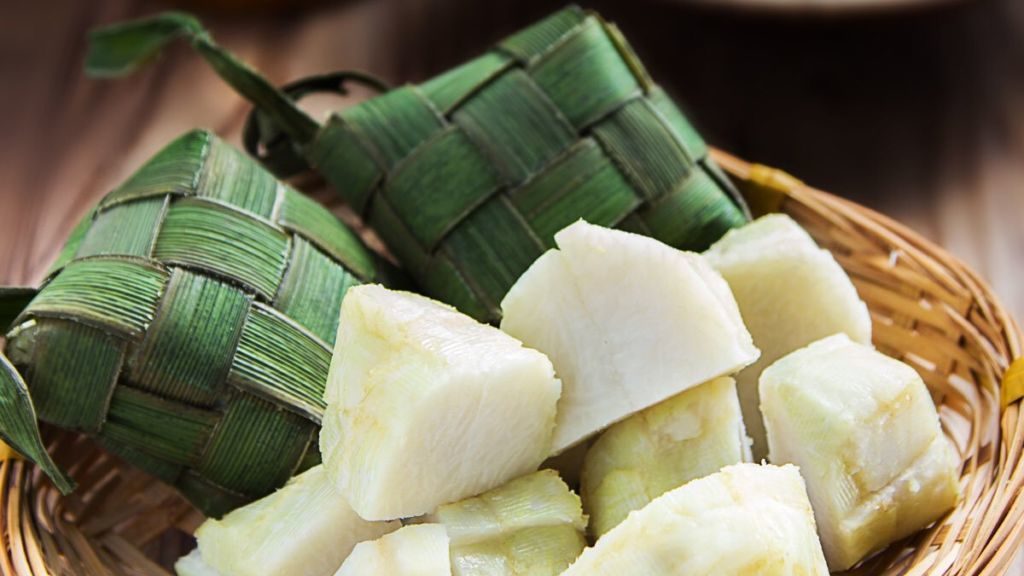Ketupat is a popular dish for Muslims celebrating Eid al-Fitr after completing the holy month of Ramadan. It is made from rice wrapped in young coconut leaves or "janur" in Javanese, formed into a square shape with the remaining woven leaves protruding above and below. The cooking process involves boiling it for about five hours after the rice, coconut milk, and pandan leaves have been cooked in a pot for thirty minutes but not fully cooked ("di karu" in Javanese) to become the filling of the ketupat. The pandan leaves function to provide a delightful aroma and savory flavor to the ketupat. Since the leaves wilt easily, it is essential to soak them in water while cooking the rice. Ketupat is usually served with vegetables such as chicken opor, rendang, or satay.
The history of ketupat can be traced back to Sunan Kalijaga, the ninth Muslim saint (waliyullah) in Java during the 15th and 16th centuries. After the Eid al-Fitr, there is a tradition called "bakda kupat." Why is it related to ketupat? In the past, people were willing to do anything to achieve their daily goals, sometimes ignoring the interests of people around them, including family and neighbors. This behavior often resulted in hurt feelings, anger, and even hatred. Ketupat became a symbol of sincere apologies, and each part of the ketupat had unique meanings, starting from its main ingredients, rice and janur.
Rice symbolized the human desires, while janur represented the light of truth (in Javanese, "jatining nur"). Therefore, both should be interpreted as humans' need to control their worldly desires with their conscience. In Sundanese, ketupat is called "Kupat," meaning a person who is not allowed to "ngupat" or talk negatively about others. Ketupat or kupat is translated as "jarwa dhosok," which means "admitting fault" and contains a message that humans must forgive each other. For Indonesians, ketupat is not only a delicious food to be served during Eid al-Fitr but also has philosophical meanings and traditions that are essential in daily life. Therefore, it is always a favorite dish in every celebration.
Moreover, ketupat is also a symbol of unity and togetherness. It is always served in one bowl and shared by all people present, reflecting the solidarity and brotherhood that should be maintained among Muslims. Although ketupat looks simple, making it requires special skills, such as selecting the right rice, cooking it with coconut milk and pandan leaves, and wrapping it with young coconut leaves. Additionally, the cooking time for ketupat is quite long, approximately five hours. Nevertheless, the delicious and unique taste is worth all the efforts and hard work.
During Kupatan, the whole family usually gathers to make ketupat together. This moment is precious to strengthen the bonds of togetherness among family members. Furthermore, this food also symbolizes gratitude for all the blessings given by Allah SWT.
Overall, ketupat is not just a dish but also has philosophical meanings and traditions that are essential for Indonesian people. This food is a symbol of unity, togetherness, and gratitude for all the blessings received from Allah SWT.


No comments:
Post a Comment